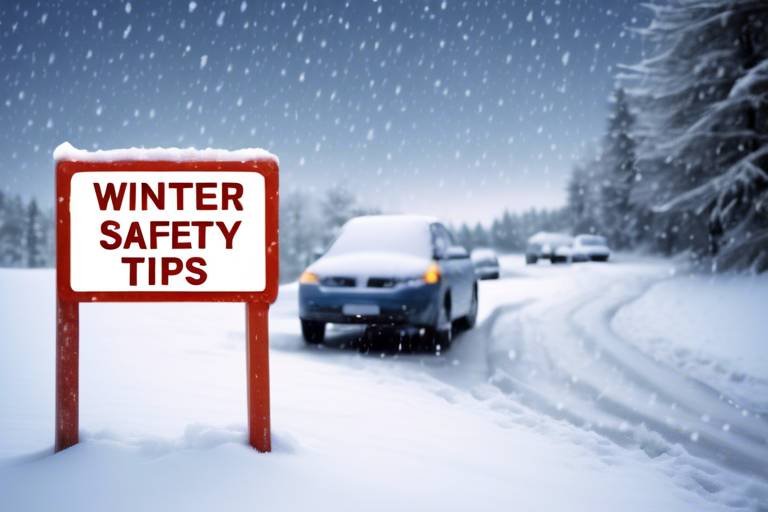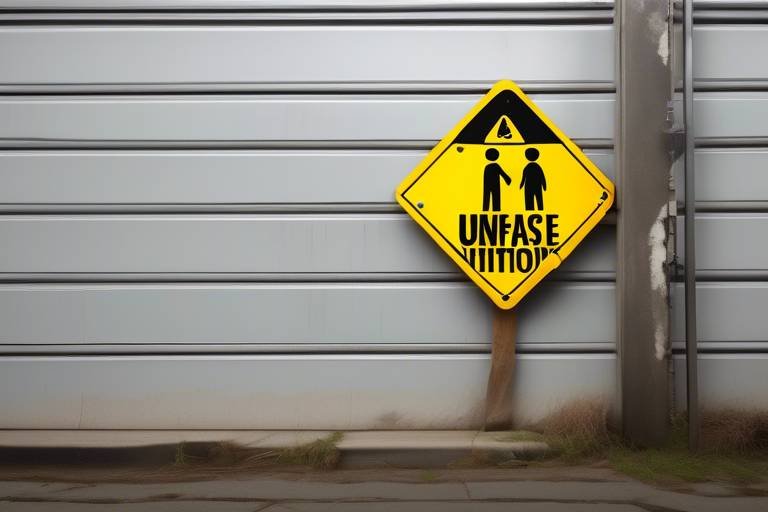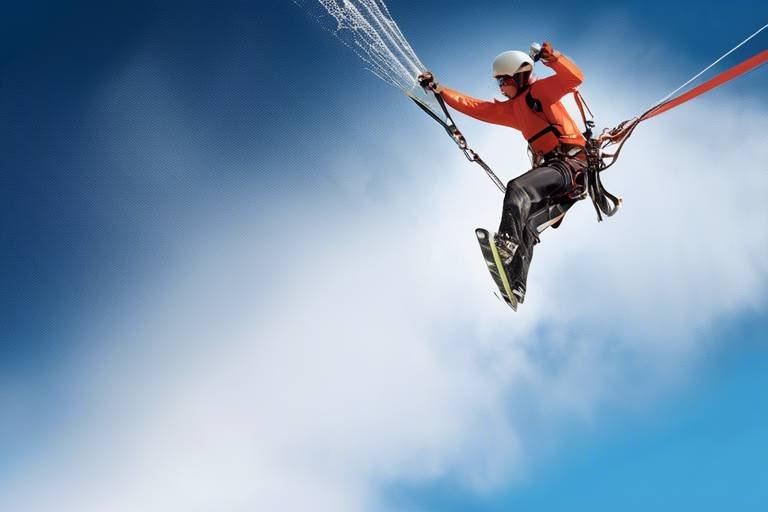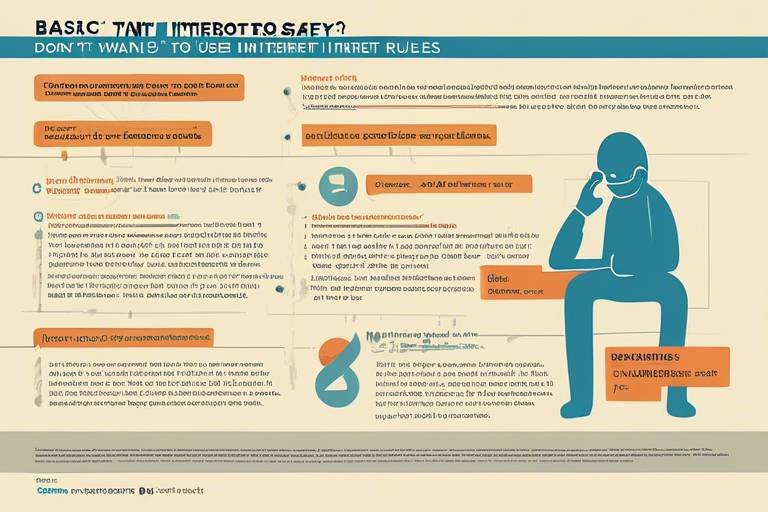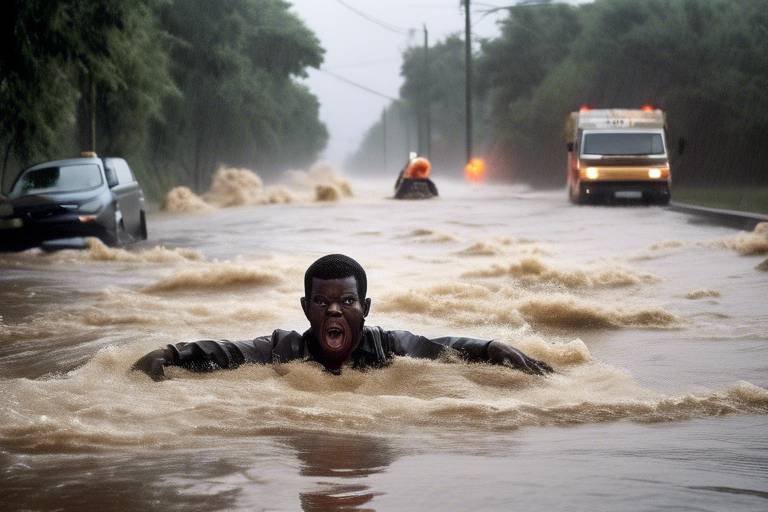Winter Holiday Safety: Tips for Vacationers
As the winter holiday season approaches, many of us are gearing up for exciting vacations filled with snow-covered adventures, festive gatherings, and cozy evenings by the fire. However, while the season brings joy and celebration, it also presents unique challenges and potential hazards that can turn your dream getaway into a nightmare. This article provides essential safety tips for vacationers during the winter holiday season, ensuring a fun and secure experience while traveling in cold and potentially hazardous conditions. From preparing for your trip to staying safe at your destination, we’ve got you covered!
Proper preparation is key to a safe winter holiday. Before you even pack your bags, make a checklist of essential items that you’ll need for your journey. Think about the weather conditions at your destination and pack accordingly. Layering is your best friend during winter; it allows you to adjust your clothing based on changing temperatures. Include thermal underwear, insulated jackets, waterproof gloves, and sturdy boots. Additionally, don’t forget about gear that can enhance your safety, such as ski helmets or snowshoes if you plan on hitting the slopes or trails.
Moreover, it’s wise to include emergency supplies in your luggage. This could be a first aid kit, a flashlight with extra batteries, and even snacks and water in case of unexpected delays. You never know when you might find yourself in a situation where these items come in handy. Remember, a little foresight can go a long way in ensuring your trip is enjoyable and secure.
Traveling during winter can present unique challenges, especially with the unpredictable weather that can lead to icy roads and flight delays. Here, we cover safe driving tips, public transport considerations, and how to navigate icy conditions to keep your journey smooth and secure. Whether you’re driving your own vehicle or relying on public transport, being prepared is essential.
Driving in snow and ice requires specific skills and precautions. It’s not just about having a good car; it’s about knowing how to handle it in less-than-ideal conditions. First and foremost, ensure your vehicle is in top shape. Check your battery, brakes, and windshield wipers, and keep your fuel tank at least half full to prevent gas line freeze-up. When you hit the road, remember to drive slowly and maintain a safe distance from other vehicles. This gives you ample time to react if someone suddenly stops or if you hit a patch of ice.
Using the right tires is crucial for winter driving. Winter tires are specifically designed to provide better traction in snowy and icy conditions compared to all-season tires. If you live in an area where winter weather is a regular occurrence or if you're traveling to a snowy destination, consider switching to winter tires before your trip. The investment can make a significant difference in your safety on the road.
An emergency kit can save lives during winter travel. It should include items such as:
- Blankets or sleeping bags
- Non-perishable food and water
- First aid supplies
- A flashlight with extra batteries
- Road flares or reflective triangles
- Basic tools for minor repairs
Having these essentials can provide peace of mind and prepare you for unexpected situations on the road.
Using public transport during winter can be safe with the right precautions. Always check the weather and service alerts before you head out. Dress warmly, and if you’re waiting for a bus or train, find a sheltered area if possible. When boarding, be mindful of icy steps and platforms. Once on board, hold onto handrails if available, and be aware of your surroundings. Staying alert is key to ensuring your safety while traveling.
Once you arrive at your destination, safety should remain a priority. Make sure to familiarize yourself with the area, including the nearest emergency services and safe routes to your accommodations. If you’re staying in a hotel or rental, check the safety features such as smoke detectors and fire exits. It’s also wise to keep your personal belongings secure, especially in crowded areas or during holiday events.
Choosing safe accommodations is vital for a worry-free vacation. Always research hotels or rentals before booking. Look for reviews that mention safety and security. Once you arrive, lock your doors and windows, and use the hotel safe for valuables. If you’re traveling with a group, coordinate meeting points in case anyone gets separated during outings.
Engaging in winter sports can be exhilarating but risky. Always wear the appropriate gear, including helmets and pads when skiing or snowboarding. Take lessons if you’re a beginner, and never venture out alone in unfamiliar areas. Stay hydrated and take breaks to avoid fatigue. Remember, it’s all about having fun while keeping safety at the forefront.
Q: What should I pack for a winter vacation?
A: Pack layered clothing, winter boots, gloves, hats, and an emergency kit with essential supplies.
Q: How can I ensure my vehicle is ready for winter driving?
A: Check your brakes, battery, and tires. Consider using winter tires for better traction.
Q: What safety measures should I take while using public transport in winter?
A: Dress warmly, stay alert, and be cautious of icy steps and platforms.
Q: How can I stay safe while engaging in outdoor winter activities?
A: Wear appropriate gear, stay hydrated, and avoid going out alone in unfamiliar areas.
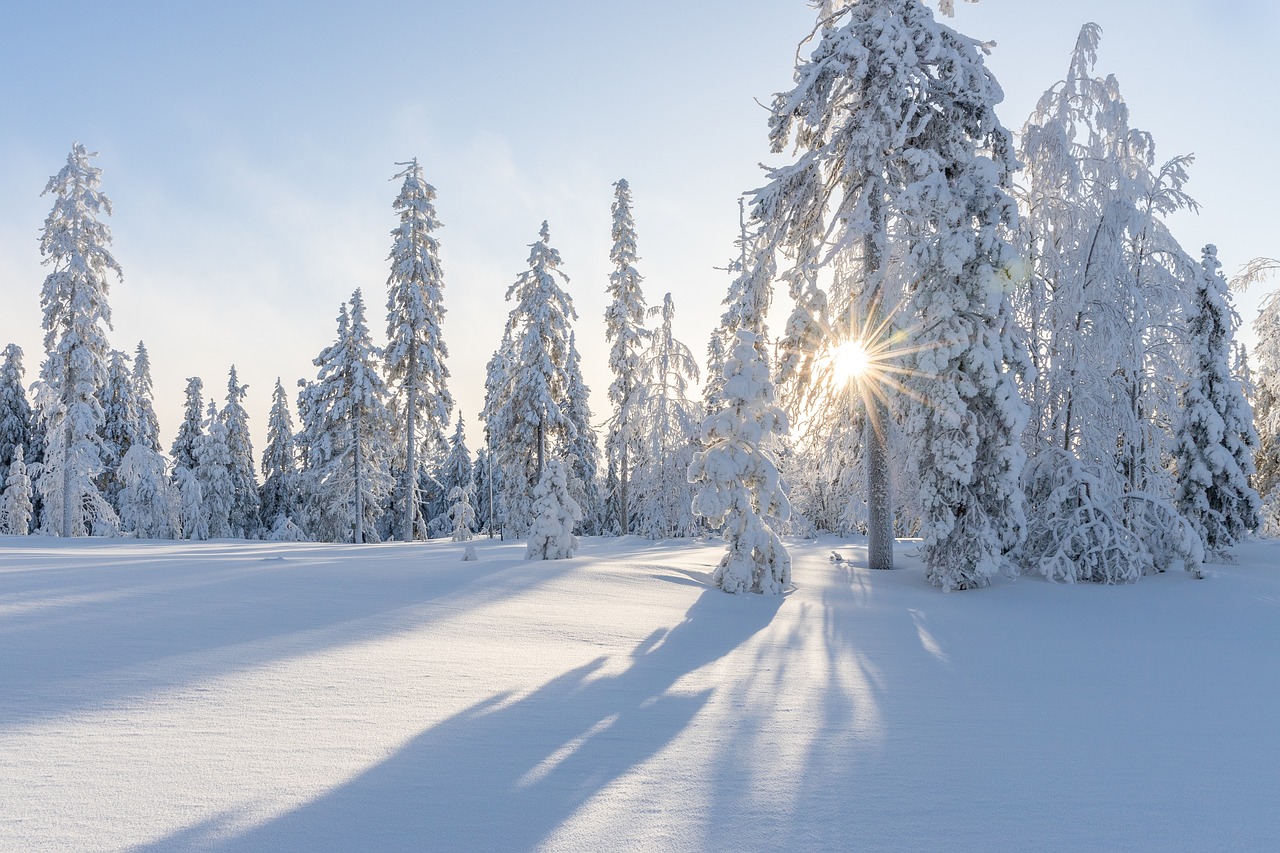
Preparing for Your Trip
Proper preparation is key to a safe winter holiday. Imagine you're gearing up for a fantastic adventure, but without the right gear, that dream trip could quickly turn into a nightmare. So, what should you pack to ensure you’re ready for anything? Here’s a quick rundown of essentials that will not only keep you warm but also protect you from unexpected situations.
First and foremost, clothing is your first line of defense against the cold. Think of it as your personal shield against winter's chill. Layering is crucial; it allows you to adjust your body temperature as conditions change. Start with moisture-wicking base layers, add insulating mid-layers like fleece, and finish off with a waterproof and windproof outer layer. Don’t forget accessories like gloves, scarves, and thermal socks. These small items can make a huge difference. Here’s a quick checklist:
- Moisture-wicking base layers
- Insulating mid-layers (e.g., fleece)
- Waterproof and windproof outer layer
- Warm gloves, hats, and scarves
- Thermal socks and waterproof boots
Next up, gear. If your winter getaway involves outdoor activities, make sure you have the right equipment. Whether it's skis, snowboards, or even just a good pair of snowshoes, having the right gear can enhance your experience and keep you safe. Always check that your equipment is in good condition before you head out. A broken ski or a malfunctioning snowboard can lead to accidents.
Emergency supplies are another critical aspect of your packing list. Think of these as your safety net. You never know when you might need them. At a minimum, your emergency kit should include:
- First aid kit
- Flashlight with extra batteries
- Blankets or sleeping bags
- Non-perishable snacks and water
- Basic tools and a multi-tool
Also, consider packing a portable phone charger. In the cold, batteries drain faster, and you don’t want to be left without a way to call for help if needed. Lastly, always share your itinerary with someone who isn't traveling with you. It’s a simple step that can make a world of difference if something goes wrong.
In summary, preparation is not just about packing; it’s about ensuring you have everything you need to enjoy your winter holiday safely. By focusing on the right clothing, equipment, and emergency supplies, you set yourself up for a secure and enjoyable experience. So, are you ready to hit the road with confidence?
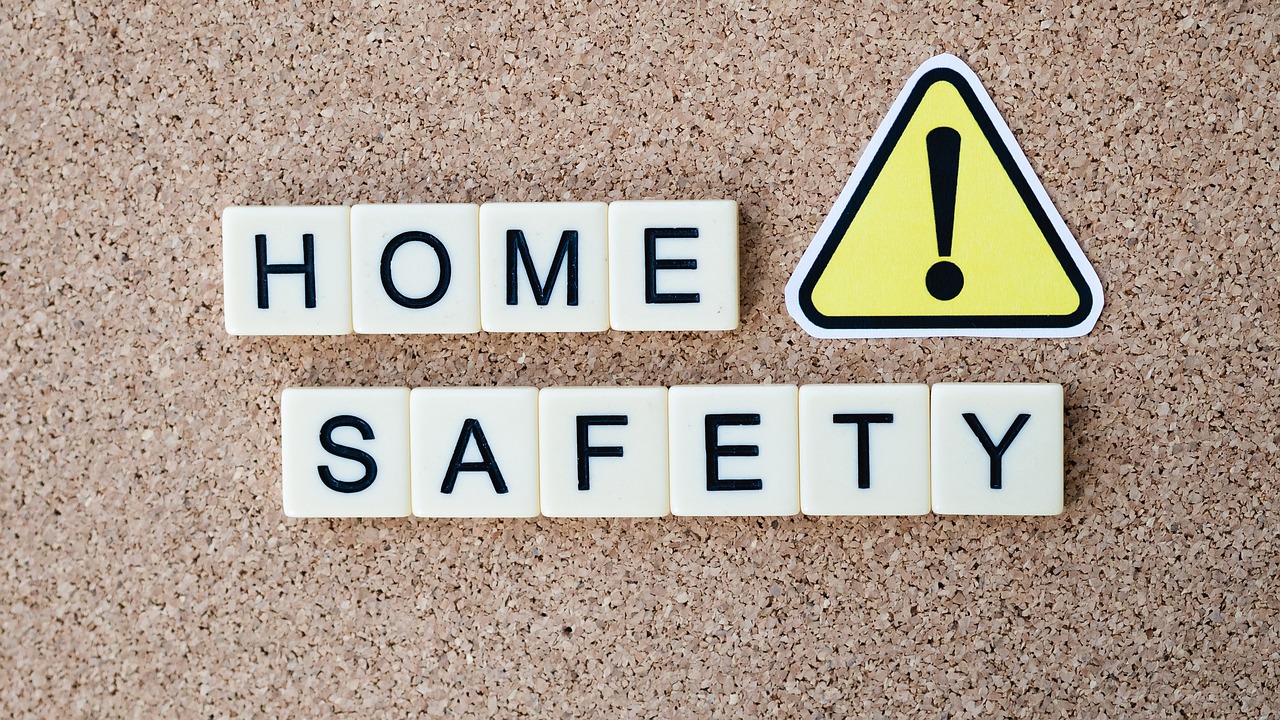
Traveling Safely
Traveling during the winter can feel like navigating a beautiful yet treacherous wonderland. Snowflakes may dance in the air, and holiday lights twinkle, but beneath that enchanting surface lies a host of challenges. From icy roads to unpredictable weather, it’s crucial to prioritize safety to ensure your journey is as enjoyable as it is memorable. So, how can you make your winter travels smooth and secure? Let’s explore some essential tips that will keep you safe on the road and beyond.
First and foremost, always check the weather forecast before you set out. Knowing what to expect can help you prepare adequately. If heavy snow is predicted, consider adjusting your travel plans. It’s better to be safe than sorry! If you must travel, make sure your vehicle is equipped for the conditions. This means ensuring your windshield wipers are functioning well, your headlights are bright, and your tires are suitable for winter driving.
Speaking of tires, if you’re driving, you might be wondering about the best options for winter. Winter tires are a game changer! They provide better traction on snow and ice compared to all-season tires. If you haven't switched them out yet, now is the time! Remember, the right tires can mean the difference between a smooth ride and a slippery slide. If you're unsure when to make the switch, a good rule of thumb is to install winter tires when temperatures consistently drop below 45°F (7°C).
Now, let’s talk about emergency preparedness. No one wants to think about getting stuck in the snow, but it can happen. Packing an emergency kit in your vehicle can be a lifesaver. Here are some essentials you should consider including:
- Blankets or sleeping bags
- Non-perishable snacks and water
- A flashlight with extra batteries
- A first aid kit
- Basic tools (like a shovel and jumper cables)
Having these items on hand can provide peace of mind and keep you safe if you find yourself in a bind.
If you prefer public transport, don’t fret! It can be a safe and efficient way to travel during winter. Just remember to dress warmly and allow extra time for delays, as snow and ice can affect schedules. When waiting at bus stops or train stations, stand back from the edge of the platform and be cautious of slippery surfaces. Always keep an eye on your belongings, as crowded spaces can attract pickpockets, especially during the busy holiday season.
Finally, whether you're driving or using public transport, it’s vital to stay alert and avoid distractions. Put your phone away and focus on the road (or the tracks) ahead. If you’re traveling with friends or family, engage in conversations to keep everyone alert. A little laughter can go a long way in making the journey enjoyable, but safety should always come first!
In conclusion, winter travel can be a delightful experience filled with cozy memories and festive cheer. By preparing adequately, staying informed about weather conditions, and being mindful of safety precautions, you can navigate the winter wonderland with confidence. So, pack your warmest clothes, grab your emergency kit, and embark on your holiday adventure with peace of mind!
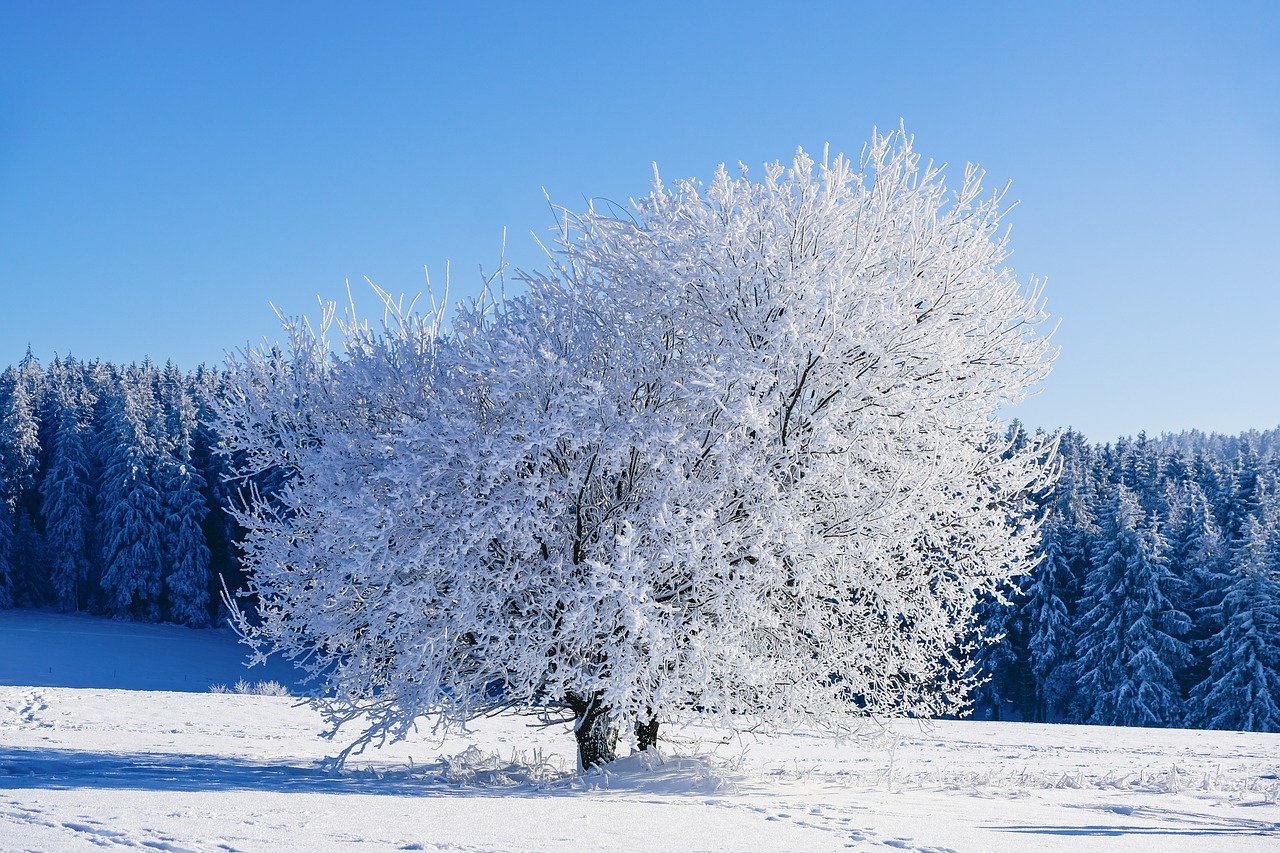
Driving in Winter Conditions
Driving in winter can feel like navigating through a snow globe—beautiful but treacherous. The key to enjoying the winter wonderland while ensuring your safety is being well-prepared and aware of the unique challenges that come with winter driving. First and foremost, it's essential to understand that snow and ice can turn even the most familiar roads into slick, unpredictable surfaces. So, how can you keep your cool behind the wheel? Let’s dive into some practical tips that can help you stay safe on your winter journeys.
One of the most crucial aspects of winter driving is ensuring your vehicle is equipped to handle the conditions. This means checking your brakes, battery, lights, and windshield wipers. But perhaps the most significant factor is your tires. Regular tires simply don't cut it when the temperature drops and the snow starts to fall. Winter tires are designed with special rubber compounds and tread patterns that provide better traction on snow and ice. If you're wondering when to switch, the general rule of thumb is to make the change when temperatures consistently dip below 45°F (7°C). This proactive step can significantly reduce your chances of skidding off the road.
But even with the right tires, driving techniques matter a lot. When you're behind the wheel in winter weather, remember to:
- Reduce your speed: Slowing down gives you more time to react to sudden changes in road conditions.
- Increase your following distance: This allows for extra time to stop, as it takes longer to brake on slippery surfaces.
- Avoid sudden movements: Make gentle adjustments to your steering and braking to maintain control.
In the event of an emergency, having an emergency kit in your car can be a lifesaver. Your kit should include essentials such as:
- Blankets to keep warm
- A flashlight with extra batteries
- Non-perishable snacks and water
- A first-aid kit
- A shovel and ice scraper
It’s not just about being prepared; it’s also about knowing how to react if you find yourself in a slippery situation. If your vehicle starts to skid, remember to steer in the direction you want to go. This may feel counterintuitive, but it’s crucial to regain control. And if you ever find yourself stuck, don’t panic. Stay with your vehicle, as it provides shelter, and signal for help. Keeping your exhaust pipe clear of snow is vital to avoid carbon monoxide buildup, which can be deadly.
Lastly, always stay informed about the weather conditions before you hit the road. Checking forecasts can help you avoid the worst of the winter storms. If the weather looks severe, consider postponing your trip. After all, no destination is worth risking your safety.
By following these tips and being mindful of the unique challenges that winter driving presents, you can navigate the snowy roads with confidence and peace of mind. So, buckle up, stay alert, and enjoy the beautiful winter landscapes safely!
Q: What should I do if I get stuck in the snow?
A: Stay with your vehicle, keep the exhaust pipe clear, and signal for help. Use your emergency kit for warmth and sustenance.
Q: How can I tell if I need winter tires?
A: If temperatures consistently drop below 45°F (7°C) and you live in an area with snow and ice, it's advisable to switch to winter tires.
Q: What items should be included in my winter emergency kit?
A: Your kit should contain blankets, a flashlight, snacks, water, a first-aid kit, a shovel, and an ice scraper.

Winter Tire Importance
When it comes to winter driving, the right tires can make all the difference between a safe journey and a hazardous ordeal. Imagine trying to walk on ice in regular shoes—it's slippery, unpredictable, and downright dangerous. Now, think about your vehicle. The tires are its only contact with the road, so they need to be equipped to handle the unique challenges that winter weather throws your way. This is where winter tires come into play.
Winter tires, also known as snow tires, are specifically designed to perform in cold temperatures, snow, and ice. They feature a unique tread pattern that enhances grip and traction, allowing for better control when driving on slick surfaces. Unlike all-season tires, which may harden in low temperatures, winter tires remain flexible, providing improved handling. This flexibility is crucial because it allows the tire to conform to the road surface, maximizing contact and minimizing the risk of skidding.
But when should you switch to winter tires? The general rule of thumb is to make the switch when the temperature consistently drops below 7°C (45°F). At this point, the rubber compounds in all-season tires begin to lose their effectiveness, while winter tires maintain their performance. It’s not just about snow; even dry roads in cold weather can be treacherous if your tires aren’t up to the challenge.
To further illustrate the importance of winter tires, let’s look at a quick comparison:
| Feature | Winter Tires | All-Season Tires |
|---|---|---|
| Temperature Performance | Effective below 7°C | Performance declines below 7°C |
| Tread Design | Deep grooves and biting edges | Shallow grooves, versatile design |
| Traction on Ice | Superior | Limited |
| Durability in Cold | High | Low |
As you can see, winter tires offer significant advantages over all-season tires when it comes to handling winter conditions. It’s not just about safety; it’s also about peace of mind. Knowing that your vehicle is equipped to tackle the harshest of winter weather can make your travels less stressful and more enjoyable. So, before you hit the road this winter, consider investing in a set of winter tires. Your safety—and that of your passengers—depends on it.
In addition to switching tires, it's essential to regularly check tire pressure, as it can drop in colder temperatures. Keeping your tires properly inflated will not only enhance your driving experience but also improve fuel efficiency. Remember, a little preparation goes a long way in ensuring you have a safe and enjoyable winter holiday!
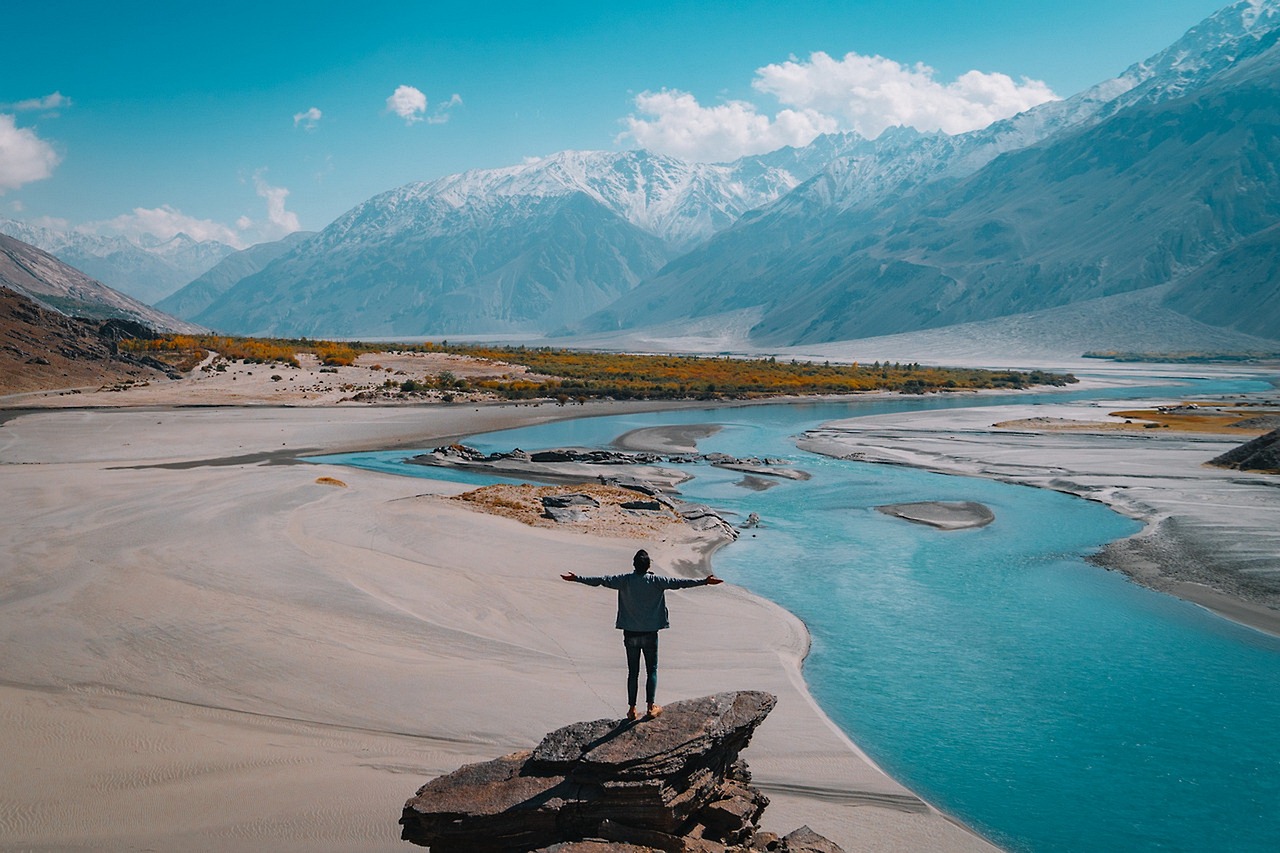
Emergency Kit Essentials
When embarking on a winter journey, the importance of an emergency kit cannot be overstated. Think of it as your travel insurance; you hope you won’t need it, but if you do, it can be a lifesaver. An emergency kit should be tailored to your specific needs, but there are some universal essentials that everyone should include. These items will help you stay safe and warm during unforeseen situations, such as getting stranded in snow or facing sudden weather changes.
First and foremost, your emergency kit should contain basic supplies that can keep you comfortable and safe. Here’s a quick breakdown of some critical items to consider:
- Warm blankets: Hypothermia is a serious risk in cold conditions, so having extra blankets can provide necessary warmth.
- Non-perishable food: Energy bars, nuts, and dried fruits can keep your energy up if you're stuck for a while.
- Water: Staying hydrated is crucial, even in cold weather. Pack bottled water or a portable water filter.
- First aid kit: Accidents happen, and having a well-stocked first aid kit can help you handle minor injuries.
- Flashlight and extra batteries: If you find yourself in the dark, a flashlight can be invaluable. Make sure to pack extra batteries as well.
- Portable phone charger: Keeping your phone charged can be a lifeline in emergencies.
Moreover, it’s wise to include tools and equipment that can assist in case of a breakdown or unexpected situation. For instance, a multi-tool can be incredibly handy for various tasks, while a shovel can help you dig your vehicle out of snow. Additionally, consider packing some road flares or reflective triangles to alert other drivers if you find yourself stranded. These items not only increase your visibility but also help you signal for help.
Another essential item that often gets overlooked is a local map. While most of us rely on our smartphones for directions, a physical map can be a lifesaver if you lose cell service or your battery dies. It's always better to have a backup plan!
Finally, remember to review and update your emergency kit regularly. Just like you wouldn’t drive on worn-out tires, you shouldn’t rely on expired supplies. Check the contents of your kit before each trip and replace any items that are outdated or missing. Keeping your emergency kit stocked and ready is like having a safety net; it gives you peace of mind while you focus on enjoying your winter adventure.
Q: What should I do if I get stranded in my vehicle?
A: Stay with your vehicle, as it's easier for rescuers to find you. Run the engine for 10 minutes every hour for heat, and ensure the exhaust pipe is clear of snow to prevent carbon monoxide buildup.
Q: How often should I check my emergency kit?
A: It's recommended to check your emergency kit at least once a season, or before any major trip, to ensure all supplies are in good condition and nothing is expired.
Q: Are there any specific items I should include for traveling with children?
A: Yes! In addition to the standard items, consider packing extra snacks, small toys or games to keep them entertained, and any necessary medications.

Public Transport Safety
Using public transport during the winter months can be a convenient and effective way to navigate through snowy cities and bustling holiday crowds. However, it’s essential to prioritize your safety while doing so. Whether you’re hopping on a bus, boarding a train, or using a tram, there are several precautions you can take to ensure a smooth and secure journey. One of the first things to consider is your timing. Winter weather can lead to delays, so it’s wise to check the schedule beforehand and allow for extra travel time. This way, you won’t feel rushed, which can often lead to accidents or missed connections.
When waiting for public transport, remember to stand in well-lit areas and avoid secluded spots, especially late at night. If you're waiting at a bus stop or train station, keep your belongings close to you and be aware of your surroundings. It's easy to get distracted by your phone, but taking a moment to observe your environment can help you spot any potential issues before they escalate. Additionally, it's advisable to wear comfortable shoes that provide good grip, as platforms and sidewalks can be slick with ice or snow.
Once you're on board, be mindful of other passengers. In crowded conditions, it’s important to maintain a respectful distance while still ensuring you have a secure hold on a handrail or seat. If you're carrying heavy bags, try to place them on the floor rather than on your lap to avoid losing your balance. Also, keep an eye on your belongings; winter travel often means larger coats and bags, which can make it easier for items to slip away unnoticed.
In case of an emergency, familiarize yourself with the emergency exits and procedures of the transport you are using. Most buses and trains have emergency protocols in place, but knowing where the exits are can make a significant difference in a critical situation. If you’re traveling with children, keep them close and explain the importance of staying together and listening to announcements.
To further enhance your public transport experience during the winter, consider the following safety tips:
- Dress in layers: This allows you to adjust your clothing according to the temperature inside the vehicle versus outside.
- Stay hydrated: It’s easy to forget to drink water in winter, but staying hydrated helps keep your energy levels up.
- Use travel apps: Many cities have apps that provide real-time updates on public transport, helping you avoid delays.
Public transport can be a fantastic way to explore new places while minimizing the hassle of parking and traffic. By staying alert and prepared, you can enjoy the festive atmosphere without compromising your safety. So, the next time you plan a winter holiday, remember these tips to make your public transport experience as safe and enjoyable as possible!

Staying Safe at Your Destination
Once you've arrived at your winter holiday destination, the excitement of exploring new places can sometimes overshadow the importance of safety. However, maintaining a vigilant mindset is crucial to ensure your trip remains enjoyable and secure. First and foremost, always familiarize yourself with the local area. This means knowing where the nearest hospitals, police stations, and emergency services are located. It can be a lifesaver in unexpected situations. Think of it as having a safety net—just in case you need it!
When it comes to accommodations, your choice can greatly impact your safety. Opt for hotels or rentals that have good reviews, especially regarding security measures. Look for places that have well-lit entrances, secure locks, and possibly even security personnel. Additionally, always keep your personal belongings secure. Use hotel safes for valuables and never leave items unattended in public spaces. If you're staying in a rental, ensure that all windows and doors are secure before you head out for the day. After all, the last thing you want is to return from a day of adventure only to find your belongings compromised.
Outdoor activities are a major highlight of winter vacations, but they also come with their own set of risks. Whether you're hitting the slopes for some skiing or simply taking a stroll through a snow-covered park, it's essential to prioritize safety. Always wear appropriate gear, such as helmets for skiing or snowboarding, and dress in layers to protect against the cold. If you’re venturing into the backcountry, consider going with a guide who knows the terrain. It’s like having a trusted friend lead the way, ensuring you stay safe while enjoying the thrill of winter sports.
Moreover, crowded holiday events can be both exhilarating and overwhelming. When attending festive gatherings or markets, keep an eye on your belongings and be aware of your surroundings. It's easy to get caught up in the moment, but a little caution can prevent unfortunate incidents. If you're traveling with children, consider using child safety harnesses or wristbands with your contact information, just in case they wander off. It’s a simple yet effective way to keep them safe while you enjoy the festivities.
In summary, staying safe at your destination involves a mix of preparation and awareness. By choosing secure accommodations, being cautious during outdoor activities, and remaining vigilant in crowded places, you can ensure that your winter holiday is not just fun but also safe. Remember, the goal is to create unforgettable memories without the worry of safety hanging over your head!
Q: What should I do if I feel unsafe in my accommodation?
A: If you feel unsafe, contact the front desk or your host immediately. Trust your instincts; if something feels off, consider relocating to a different room or hotel.
Q: How can I stay safe while engaging in winter sports?
A: Always wear the appropriate safety gear, stay within marked areas, and never go alone into unfamiliar terrain. It's also wise to take lessons if you're a beginner.
Q: What should I pack for winter travel safety?
A: Essential items include a first aid kit, extra layers of clothing, emergency contact information, and a portable phone charger. These can help you stay prepared for any situation.

Accommodation Safety Tips
When you're on vacation, the last thing you want to worry about is your safety. Choosing the right accommodation can significantly impact your overall experience. It's not just about finding a cozy bed; it's about ensuring that your surroundings are secure. First and foremost, always do your research before booking a place. Look for accommodations that have good reviews, especially regarding safety. Websites like TripAdvisor or Booking.com can provide insights from previous guests, highlighting any potential red flags.
Once you arrive, take a moment to familiarize yourself with your surroundings. Know the emergency exits and how to reach them quickly. It's a bit like being in a new house; you wouldn't want to get lost in a maze when you need to get out fast! Additionally, secure your belongings. Use the hotel safe for your valuables, and if you're in a rental, ensure that windows and doors are locked when you leave. A little precaution goes a long way in keeping your items safe.
Moreover, consider the location of your accommodation. Is it in a well-lit area? Are there security measures in place, like cameras or security personnel? Staying in a safe neighborhood can make all the difference. If you're out late, opt for a taxi or rideshare service instead of walking back alone. Remember, safety is paramount, and it’s better to be cautious than to take unnecessary risks.
Lastly, don’t hesitate to communicate with the staff. They are there to help you and can provide valuable information about the area, including which places to avoid. If you're ever feeling uneasy about something, trust your instincts and seek assistance. After all, your vacation should be a time of joy and relaxation, not anxiety!
Q: What are the best ways to secure my belongings in a hotel?
A: Use the in-room safe for valuables, keep your luggage locked, and avoid leaving items in plain sight.
Q: How can I find safe accommodations?
A: Read reviews, check safety ratings, and look for hotels with security measures in place.
Q: What should I do if I feel unsafe in my accommodation?
A: Trust your instincts; contact hotel management or local authorities if necessary.
Q: Is it safe to use public Wi-Fi in hotels?
A: Public Wi-Fi can be risky; consider using a VPN for added security when accessing sensitive information.

Outdoor Activity Precautions
Engaging in winter sports can be one of the most exhilarating experiences, but it also comes with its fair share of risks. Whether you're hitting the slopes for some skiing or snowboarding, or simply enjoying a winter hike, being cautious is crucial to ensure a safe and enjoyable time. First and foremost, always check the weather conditions before heading out. A clear day can quickly turn into a snowstorm, leaving you disoriented and at risk. It's a bit like planning a picnic; you wouldn't want to set up your blanket in the rain, right?
When participating in outdoor activities, proper gear is non-negotiable. This includes wearing layers that can keep you warm and dry, as well as investing in high-quality gear specific to your chosen activity. For example, if you're skiing, make sure your ski boots fit well and your bindings are adjusted correctly. Just like a chef wouldn’t use dull knives, a winter sports enthusiast shouldn’t compromise on their equipment. And don’t forget about safety gear! Helmets, goggles, and knee pads can be lifesavers, literally.
Moreover, it's essential to stay hydrated and nourished during your outdoor adventures. Cold weather can mask your body's signals of thirst, leading you to underestimate your hydration needs. Bring along water in insulated bottles and pack some energy-rich snacks like nuts or energy bars. Think of it as fueling up your car before a long road trip; you wouldn’t want to run out of gas halfway through, would you?
Another critical aspect is to always be aware of your surroundings. This means keeping an eye out for other people, potential hazards, and changes in the terrain. If you're skiing or snowboarding, stick to marked trails and avoid going off-piste unless you're with someone experienced. Just like navigating through a busy street, awareness can help you avoid accidents and keep your winter adventure safe.
Lastly, consider taking a lesson if you're new to a sport. Professional instructors can help you learn the ropes and understand the nuances of the activity, which can significantly reduce the risk of injury. It’s like learning to swim; having a qualified instructor can make all the difference between splashing around and actually mastering the strokes.
In summary, while winter activities can be thrilling, they also require a good dose of caution and preparation. By checking the weather, wearing the right gear, staying hydrated, being aware of your surroundings, and possibly taking lessons, you can ensure that your winter adventures are both fun and safe. So, get out there and enjoy the snow, but remember to keep safety at the forefront of your mind!
- What should I wear for winter outdoor activities?
Dress in layers, wear waterproof and insulated clothing, and don’t forget safety gear like helmets and goggles. - How can I stay safe while skiing or snowboarding?
Stick to marked trails, be aware of your surroundings, and consider taking lessons if you’re a beginner. - What should I pack for a day of winter hiking?
Bring water, energy snacks, a first aid kit, a map, and ensure your footwear is appropriate for icy conditions. - Is it safe to hike in winter?
Yes, but it requires proper preparation, knowledge of the terrain, and awareness of weather conditions.
Frequently Asked Questions
- What should I pack for a winter holiday?
When preparing for a winter getaway, it's essential to pack appropriately. Make sure to include warm clothing like thermal layers, waterproof jackets, and insulated gloves. Don’t forget your winter gear such as hats, scarves, and sturdy boots. Additionally, pack an emergency kit with essentials like a flashlight, first-aid supplies, and non-perishable snacks to ensure you're ready for anything!
- How can I drive safely in winter conditions?
Driving in winter can be tricky, but with the right precautions, you can stay safe on the road. First, ensure your vehicle is winter-ready by checking the battery, brakes, and windshield wipers. Always keep your gas tank at least half full to avoid fuel line freeze-up. When driving, reduce your speed, increase your following distance, and avoid sudden movements to maintain control on slippery roads.
- Why are winter tires important?
Winter tires are designed specifically for cold weather conditions and provide better traction on snow and ice compared to all-season tires. Their unique tread patterns and rubber compounds stay flexible in low temperatures, enhancing grip. It's recommended to switch to winter tires when temperatures consistently drop below 45°F (7°C) to ensure optimal safety on the road.
- What should I include in my emergency kit for winter travel?
Your winter emergency kit should be comprehensive to handle unexpected situations. Key items to include are a flashlight with extra batteries, a first-aid kit, blankets, non-perishable food, water, a multi-tool, and a phone charger. Additionally, consider packing a shovel, ice scraper, and sand or kitty litter for traction if you get stuck.
- How can I stay safe using public transport in winter?
Using public transport during winter can be safe if you take some precautions. Always check the weather and transport schedules before heading out. Dress warmly and be cautious of icy platforms and steps. When boarding, be mindful of your surroundings and keep your belongings secure to avoid accidents or theft.
- What are some accommodation safety tips during winter vacations?
Choosing safe accommodations is crucial for a worry-free vacation. Look for places with good reviews regarding safety and security features. Ensure your room has secure locks and consider using a door wedge for added security. Keep your valuables locked up and always be aware of your surroundings, especially in crowded areas.
- What precautions should I take for winter sports?
Engaging in winter sports can be thrilling, but safety should be your top priority. Always wear appropriate protective gear, including helmets and pads. Warm up before hitting the slopes to prevent injuries and stay hydrated. Be mindful of the weather conditions and know your limits; it’s okay to take breaks and assess your surroundings.

